Irix 15 mm f/2.4 Blackstone
4. Image resolution
Let’s check how the tested lens compares here – its results in the frame centre, on the edge of the APS-C/DX and on the edge of full frame presents a graph below.
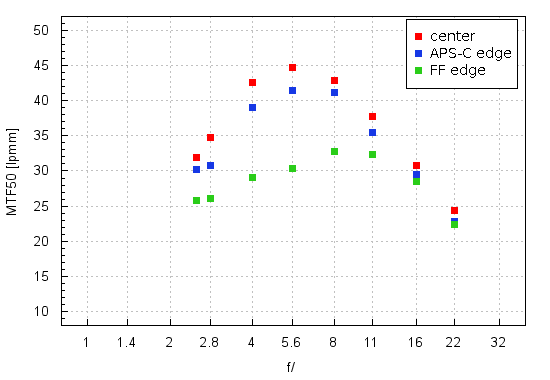
Please Support UsIf you enjoy our reviews and articles, and you want us to continue our work please, support our website by donating through PayPal. The funds are going to be used for paying our editorial team, renting servers, and equipping our testing studio; only that way we will be able to continue providing you interesting content for free. |
- - - - - - - - - - - - - - - - - - - - - - - - - - - - - - - - - - - - - - - - - - - - - - - -
The image you see in the centre is very nice indeed. Already at the maximum relative aperture the MTFs exceed the usefulness level and increase very swiftly on stopping down. The lens reaches the peak of its performance, which is 45 lpmm, a really high value, near f/5.6. Although it would be difficult to have any reservations here it’s worth noticing that result is weaker than the result of the Samyang 14 mmf/2.8 ED AS IF UMC which already at the maximum relative aperture was able to reach a truly brilliant level of 44 lpmm and then exceeded 46 lpmm on stopping down.
What’s interesting, the performance of the Irix 2.4/15 on the edge of the APS-C/DX frame differs just slightly from the values you see in the centre. It is an excellent piece of news; it means that the peak of the performance of the Irix is actually better than that of the Samyang 2.8/14, so praised by us before.
A very significant resolution decrease can be observed on the very border of the frame. It would be difficult to talk about sharp images in that place near the maximum relative aperture; only after employing apertures near f/4.0–5.6 the sharpness level becomes acceptable. The results of the Samyang were a tiny little bit better near the maximum relative aperture but on stopping down the Irix manages to defeat it.
Usually we end our resolution performance review in this place because the results between particular testing charts don’t differ by more than 10-15%. In means that the lens fares similarly at different distances so we can average out all the results and present them in a form of one graph.r
In the case of the Irix, though, the situation is completely different. The lens is clearly designed to work at longer distances; when you position it close to the target it performs much worse. A graph below show differences in resolution for the frame centre between the smallest (close) and the biggest (far away) testing chart.
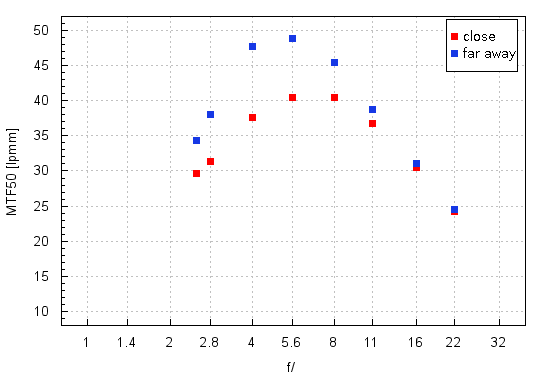
If you take photos from shorter distances you have to take into account results which are only good at best; the shots from greater distances, on the other hand, are an opportunity for getting frames with very good resolution.
If you set the minimum focusing distance on the scale you might have problems with finding any good focus setting at all. Below we show a photo of our autofocus testing chart which was tested in exactly those conditions - a perfect example of such a situation.
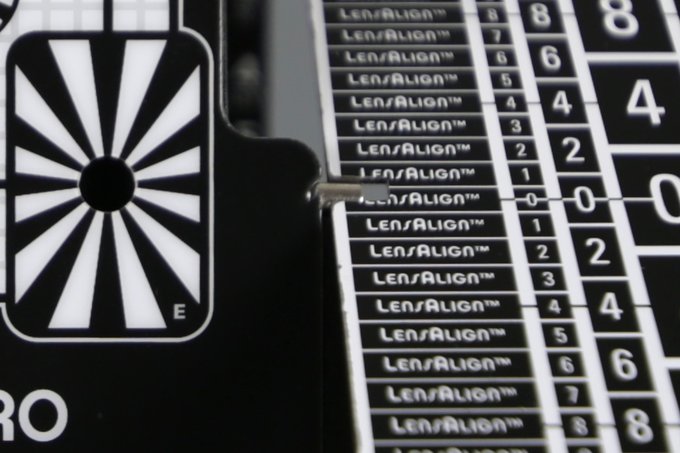 |
To sum up: while looking at the small front element of the Irix I doubted whether that lens would manage to beat the excellent and huge Samyang 2.8/14 when it comes to resolution. The results it got in our test were a very nice surprise, though. The Irix performs better on the edge of the APS-C/DX sensor than I expected and the further away from your target you go, the more the resolution increases. I do not hesitate to say that, at working distances typical for this kind of instrument, the lens is able to generate outstanding resolution values.
At the end of this chapter traditionally we present crops of our resolution testing chart, taken from JPEG files which were saved along RAW files used for the analysis above.
| Canon 5D Mk III, JPEG, f/2.5 |
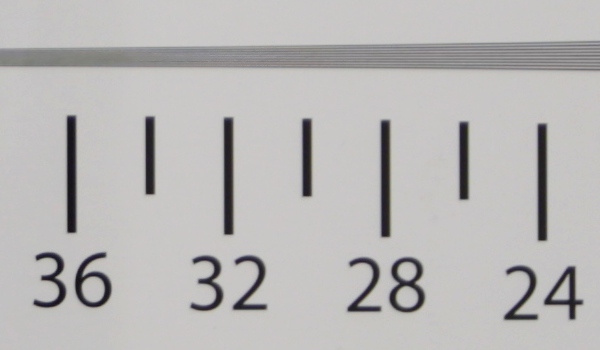 |
| Canon 5D Mk III, JPEG, f/5.6 |
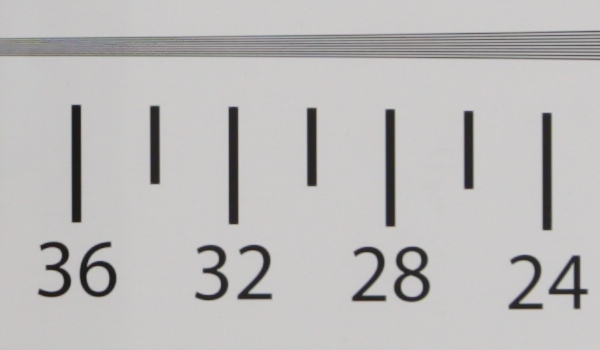 |






